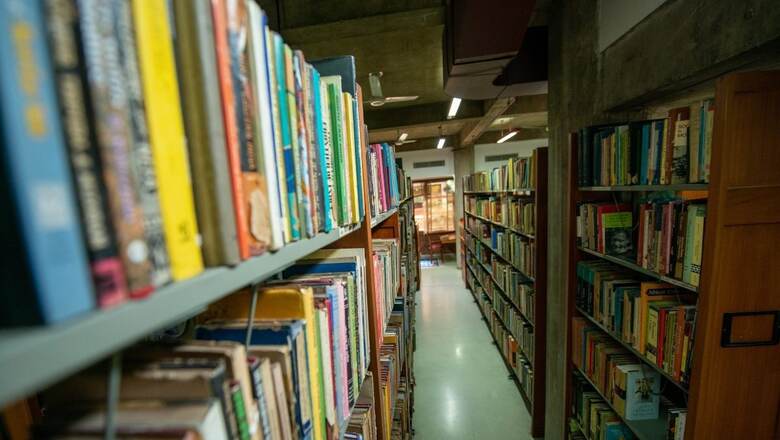
views
On a recent weekend afternoon, I found myself at a public library. John Lubbock, in his work ‘The Pleasures of Life’ eloquently stated that we may sit in our library and yet be in all quarters of the earth. At that moment, I wholeheartedly concurred with his sentiment. On that very same afternoon, I crossed paths with a 21-year-old woman who engaged me in a conversation about her current read.
As we chatted, we uncovered numerous shared interests, one of which was our places of birth. This exchange brought to my attention that libraries offer far more than their commonly attributed functions, such as providing learning opportunities, promoting literacy and education, and fostering the development of fresh ideas and perspectives. Much like any other public space, libraries facilitate interactions among members of society and nurture the cultivation of social connections, both of which are often understated and underrated. All these aspects of the library are central to a creative and innovative society.
Regrettably, India has not fully recognised the crucial role that libraries play in nation-building. This oversight is evident in the lack of comprehensive data regarding the number of public libraries in the country since its independence in 1947. The absence of reliable figures has led to conflicting statistics provided by various sources. According to the 2011 National Census, there were reported to be around 75,000 libraries across the nation. In a more recent study by the International Federation of Library Associations and Institutions (IFLA) in 2023, the number of libraries in India was estimated to be a significantly higher figure, approximately 146,000. An investigation in 2019 through a right-to-information query revealed a stark discrepancy in Madhya Pradesh, where there was just one public library for every 17 lakh people. This ratio is notably lower than the national average of one library for every 30,000 people, as reported by The Times of India.
Even among the public libraries that do exist in India, many suffer from systemic neglect. Inadequate funding has left them struggling to stay updated and well-maintained. The overall investment in libraries has dwindled over time. State taxes, which included the library cess—a surcharge of property tax paid to local governments, city corporations, or village panchayats—were initially meant to finance libraries. However, the decreasing allocation of funds has adversely affected these critical centres of learning and culture.
Most of the libraries in the country lack basic infrastructure. They further have limited resources, with outdated or insufficient book collections and reference materials. This neglect has a profound impact on the quality of services they can offer to their communities. The list of quality public libraries in India is tragically short. Most of the quality libraries operate on a subscription model, often restricting people who cannot afford it. Furthermore, the phenomenon of urbanisation has given rise to gated libraries. These libraries are typically well-funded, equipped with state-of-the-art resources, and maintain an ambience conducive to learning. However, their exclusivity in terms of access and membership fees puts them out of reach for many individuals who cannot afford the associated costs. These exclusive enclaves for knowledge cater primarily to the affluent, leaving those on the lower socioeconomic strata at a disadvantage. This trend exacerbates the existing disparities in access to education and information, effectively turning knowledge into a luxury accessible only to the wealthy.
Currently, India lacks a national legislation or policy that specifically addresses public libraries. The absence of such a comprehensive framework hinders the development and standardisation of these critical community institutions. Complicating matters, the management of libraries in India falls under the jurisdiction of individual states. Unfortunately, many states lack comprehensive legislation or a uniform set of guidelines governing the operation of these vital social institutions. The implementation of a national library policy could be a transformative step in strengthening India’s public library system in several ways such as funding allocation, promotion of innovation, uniformity, community engagement, advocacy and awareness.
For libraries in India to fulfil their broader functions and serve as catalysts for societal development, it is imperative to increase investments in public libraries. This entails a commitment to allocate more resources to these institutions. Simultaneously, there should be a concerted effort to systematically enhance the functioning and services provided by libraries. This includes modernising infrastructure, expanding collections, and implementing innovative programs that cater to the evolving needs of diverse communities. Such investments will not only promote education and literacy but also contribute to the enrichment and progress of society as a whole.
The disparities in library accessibility across different states and regions in India reflect the urgent need for a nationwide effort to acknowledge and invest in libraries as integral components of the nation’s cultural and educational infrastructure. By recognising and addressing these issues, India can harness the power of libraries to promote learning, literacy, social cohesion, and the development of innovative ideas, ultimately contributing to the nation’s growth and progress.
Mahek Nankani is Lead, Growth & Partnerships at The Educational Initiatives. Views expressed in the above piece are personal and solely that of the author. They do not necessarily reflect News18’s views.




















Comments
0 comment